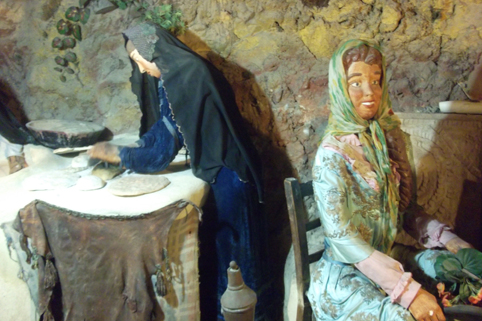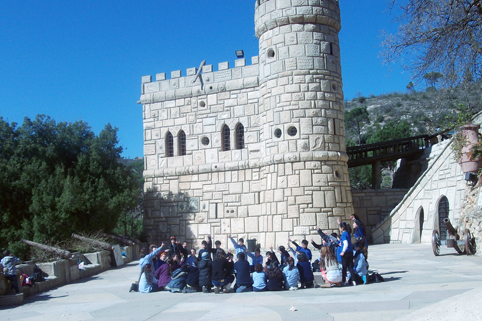Doing Business in the Middle East:
Moussa Castle: a child’s dream!
How one man transformed his dream castle into a successful business.
Driving along the verdant outskirts of Beirut en route to a visit to Beiteddin Palace, we find ourselves in the Chouf region that is a well-known landmark and favorite with tourists.
Our correspondent expected to see ancient palaces and ruins from a former era of this beautiful country. But what she didn’t expect to find, on a hill between the stone houses of Deir El Qamar and Beiteddin’s famous palace, was to arrive at the doorstep of a real castle, with its builder, Moussa Abdel Karim Al-Maamari, sitting at the entrance of its beautiful towers.
Moussa, wearing simple and comfortable clothes, looks especially content with his 84 years of age. He chats modestly with visitors and children who take time to visit this amazing place and gives valuable advice while explaining his unbelievable story. “Young people should be courageous, and never give up, and one should always remember to honour one’s parents”.
The amazing thing here is that this castle was built by one man, a Lebanese visionary, with his own hands.
Moussa Castle – 60 years of work to bring a boy’s dream to life
The story begins when Mr Al-Maamari, a child from a poor family, was chastised by a teacher who told him that he was ‘good for nothing’ when he spotted him sketching his dream … a castle. This sketch survived and has been kept as a treasure by Mr Al-Maamari until today.
A lifetimes work
Mr Al-Maamari was born in July 1931 in the village of Harat of Al Saraya. He left school at 14 and went to Sida where he worked with his uncle in restoring Sida’s fortress. He was then tasked by Emir Maurice Chehab to renovate the castles and the archeological discoveries found in Lebanon. He also worked installing ancient columns, discovered within Beirut’s Municipality in 1949, in front of the National Museum (where the Monument of the Unknown Soldier stands today). He continued working in the same field afterwards at Beiteddine Palace where he restored the museum of Emir Bashir Chehabi II. Mr Al-Maamari was paid 15,000 Lebanese pounds for this task – with it he bought suitable land and started planning and building his long life dream – his castle.
Taking things into his own hands
Moussa began to put his plan into action where he moved more than 6,000 huge rocks to the castle site, some of them weighing up to 150 kilogrammes. This tough job gave him osteoporosis (thinning of the bones), and carving stones elongated his right arm by two centimetres.
The foundation stone was finally laid in 1962 with the help of his wife. He built the castle and handcrafted each of its stones and its animated figurines, representing different scenes of ancient Lebanese village life from the 19th century. These animated models are full of life; at the entrance of the three-level castle is the scene of a woman grinding wheat, a man sewing clothes, and another riding a donkey. One can even see a model of Mr Al-Maamari’s classroom, where he sat as a child with statues depicting the teacher who beat him and students who mocked him when he drew a model of the castle of his dreams.
It is truly the work of a visionary and a masterpiece at all levels
Today, the castle receives of thousands of visitors per year, and it’s a really significant source of income for the creator and his family, with an entry fee of 30,000 Lebanese Lire (US$10).














